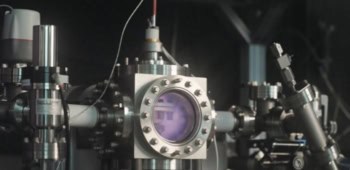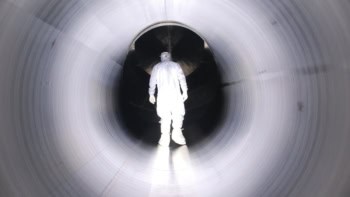The ITER fusion experiment will be built in at Cadarache in the south of France. The decision was announced by the six ITER partners - China, the European Union (EU), Japan, Russia, South Korea and the US - at a ministerial meeting in Moscow this morning. As part of various concessions to Japan, which had also offered a site for the project, the EU has agreed "privileged partnership" status for Japan, which includes support for a Japanese director-general for the project and a significant financial package.

The decision on a site for the €10bn reactor comes after an 18-month-battle between the EU and Japan, and two decades after Mikhail Gorbachev, then leader of the Soviet Union, and US president Ronald Reagan first discussed plans to build an international fusion reactor in the mid-1980s.
ITER, which stands for the International Thermonuclear Experimental Reactor, will use magnetic fields generated by superconducting coils to confine a plasma of deuterium and tritium in a donut-shaped chamber called a tokamak. The plasma will be heated to a temperature of 100 million degrees so that the deuterium and tritium nuclei can overcome their mutual repulsion and undergo nuclear fusion – the process that powers the Sun.
ITER is designed to produce 500 MW of power and to demonstrate that it is feasible to generate power from fusion. However, it will not produce any electricity. The plasma volume will be 837 cubic metres, which is more than five times the volume of JET, which is currently the world’s biggest tokamak.
Supporters of nuclear fusion argue that it has the potential to be a safe and sustainable source of energy that does not produce any greenhouse-gas emissions or long-lived nuclear waste. A fusion reactor would need just 100 grams of deuterium and 3 tons of natural lithium to produce a power output of 1 GW, which is equivalent to a large power station. The lithium is needed to generate tritium.
The EU will pay half of the total cost of ITER, with the remaining five partners paying about 10% each. Most contributions will be “in kind” in the form of actual components for the reactor rather than money to pay for them. However, the EU has agreed to transfer 10% of its procurement to Japan, to support a Japanese candidate for the post of director-general of the ITER Organisation, and to support the right of Japan to have more staff in the project than its 10% share, including the possibility of part of the headquarters being located in Japan.
The ITER parties have also agreed on a “Broader Approach” for the supporting research that is needed to make fusion a commercially viable source of energy. As part of this approach the EU will contribute €339m to the costs of projects undertaken in Japan, which could include a materials test facility or a computational centre for fusion science. And if international agreement is reached to build a demonstration reactor, the EU will support Japan as the site.
Construction of ITER should start by the end of this year and should be complete by 2015. Cadarache is already home to Tore Supra, currently the world’s largest superconducting tokamak, and some 500 fusion scientists, engineers and technicians, plus another 4000 staff working in other areas. The Cadarache lab, which is close to Marseille, is run by the CEA – the French atomic energy commission.
The six partners have been discussing where to build ITER since December 2003. However, the situation was deadlocked because China and Russia supported EU plans to build the reactor at Cadarache, while South Korea and the US backed a Japanese proposal to construct it at Rokkasho-Mura, which is 600 km north of Tokyo.



